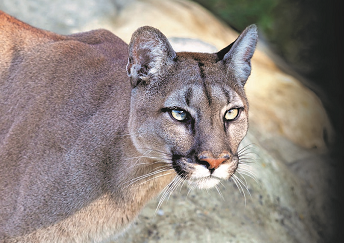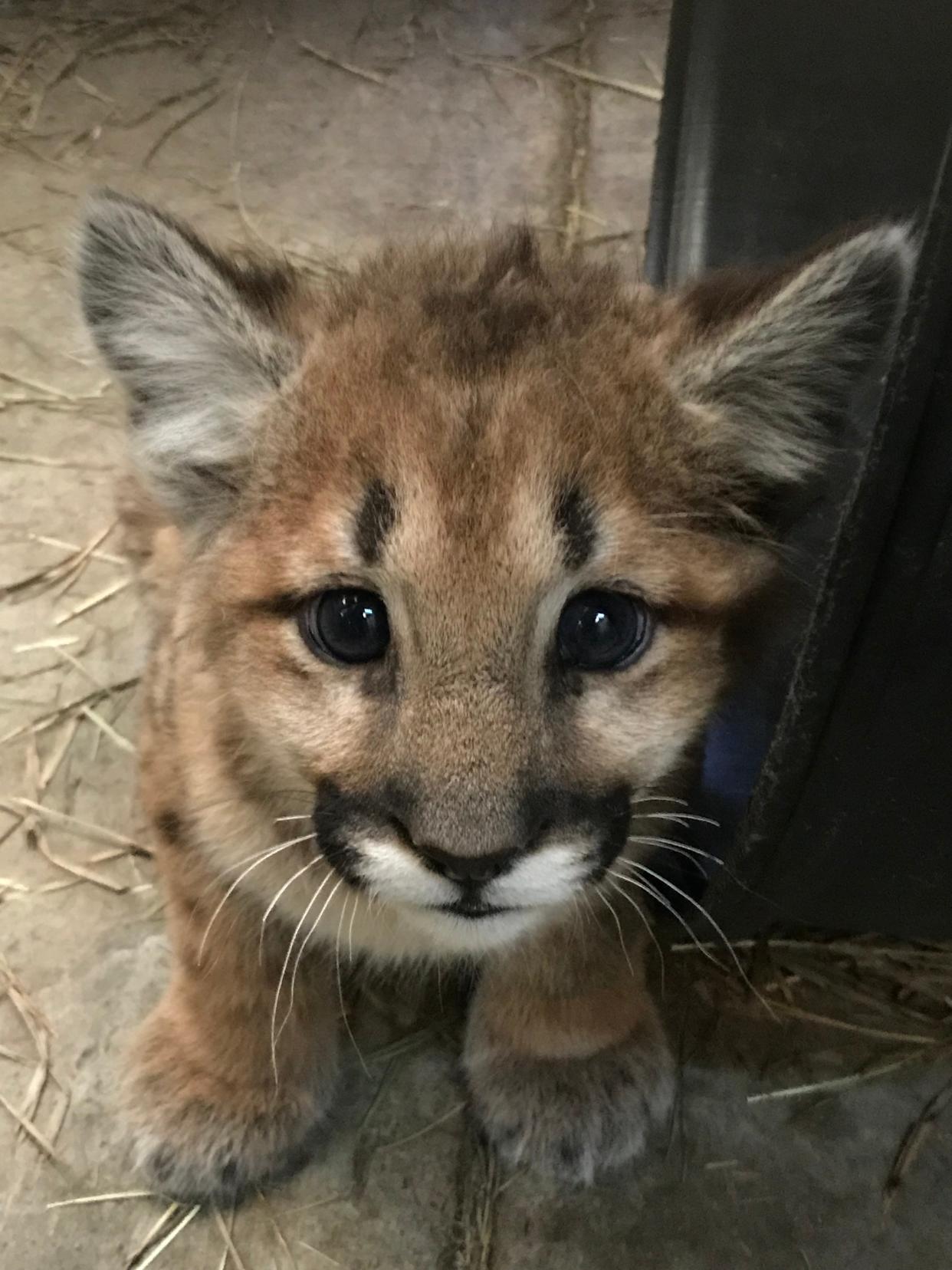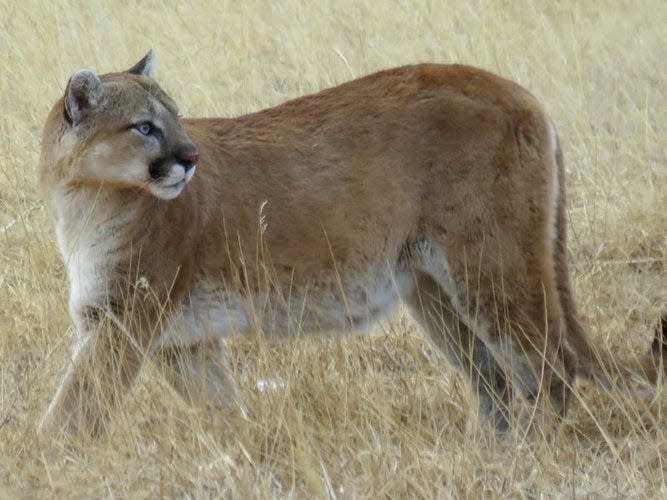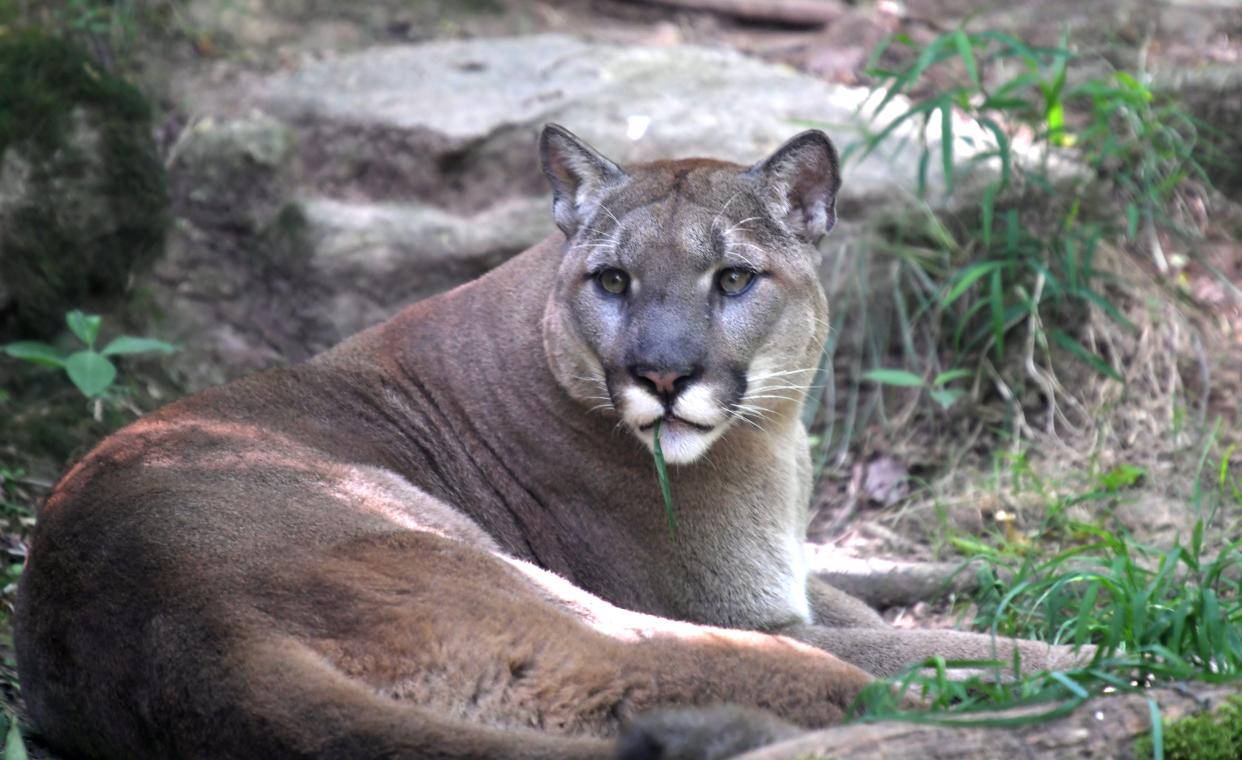Goetze: This large but elusive predator has many names
This cat has many names. Some of the most recognizable are catamount, cougar, leon americano, long tail, lord of the forest, mountain lion, painter, panther and puma.
Its scientific name, Puma concolor, also has at least two meanings. The genus name, "Puma," is translated as powerful animal, and the species name, "concolor," is Latin for of uniform color.
Puma can also be translated as poltroon or cowardly, perhaps because of the cat’s evasive behaviors. I personally think of pumas as powerful animals and skilled predators capable of subduing prey larger than themselves and not cowardly but, instead, prudent in avoiding humans.

For the sake of consistency, I’ll refer to the cats as pumas in this discussion.
Whatever you call this cat, it's the biggest
Why does the puma have so many different names? Maybe because it has — or once had — the most extensive distribution in the western hemisphere. Pumas’ historic range extended from southern Alaska southward through Canada, the United States, Mexico, Central and South America to Argentina!
Pumas once occurred throughout the continental United States, but their range was significantly reduced after European settlement.
Pumas are the largest native cats currently residing in Texas and Oklahoma. Their head and body length averages 50 inches and length of the tail is approximately 36 inches. Large adults may stand 31 inches at the shoulder and weigh more than 100 pounds.
Does the puma patrol the Wichita Falls area?
Their fur is usually short and, as their scientific name implies, their upper parts are a uniform, tawny color. The belly, neck, sides of the muzzle and lower lip are white. But the posterior edges of their muzzle, back of the ears and tail tip are black. Kittens have a faint, dark, spotted body pattern which fades to the uniform colors upon maturity.
Although these large, distinctive cats should be easily seen, pumas occur in low numbers in their habitats and each individual has a large home range: averaging 50 square miles for females and twice that area for males.

Home ranges of females overlap, but those of males have no intentional overlap. Territories are marked with urine and males construct and urinate upon small scraped-up piles of leaves and grasses. Suitable habitats vary from rocky, broken terrain and mountainous areas to brushlands and edge habitats along rivers and streams.
Swampy areas, forests and bottomlands also are good habitats, but the cats usually avoid croplands and open terrain. Pumas are occasionally sighted near rivers, streams and habitats containing permanent water sources within Northcentral Texas and Southwestern Oklahoma.
The cats have been confirmed from Wichita, Dallas and Tarrant counties of Northcentral Texas, as well as Tillman and Greer counties of Southwestern Oklahoma. They probably occur in other parts of our region and the use of trail cameras and other night vision technologies will doubtless result in additional sightings and reports.
On the move and on the hunt
Pumas can be active at any hour but are primarily nocturnal and may forage more frequently at night when near human occupied areas.
They commonly travel 6 miles or more when foraging and stop at ambush sites several times during a hunting session and wait for 90 minutes or more for a suitable prey animal to approach within striking distance. The cats kill larger animals by leaping upon the prey’s back and breaking its neck with a bite to the base of the skull.

Pumas show a dietary preference for deer, and researchers discovered that at least 40 percent of successful kills were old deer and/or deer in poor physical condition. Large prey animals are dragged to a secluded site and unconsumed portions are partially covered with soil, leaves and grasses.
Pumas supplement their diets with porcupines — skilled cats learn to flip porcupines upside-down to expose their un-quilled bellies, skunks, bobcats, foxes, coyotes, raccoons, opossums, rabbits, mice and rats, ground squirrels, turkeys, fish and insects.
Pumas consume very little vegetable matter. A puma may only eat six out of every nine days and, depending upon the availability of smaller animals, consumes the approximate equivalent of 14 to 20 deer per year.
Pumas are labeled as livestock killers and have been hunted and trapped almost constantly since European settlement. The greatest losses of pumas occur from predator control and sport hunting and accidents such as falls and automobile strikes. Poultry, goats, sheep, horses, dogs, cats and calves are potential prey for pumas.
On balance
However, research indicates that the number of cattle killed varies inversely with the number of available deer and other prey animals within the puma’s territory.
From a positive perspective, pumas stabilize deer populations and, if feral pigs or peccaries are available, these animals are consumed in only slightly lower numbers than deer.

Finding mates, raising cubs
Except for females with cubs and times of mating, pumas are solitary. Females attain sexual maturity at 2 or 3 and produce a litter averaging three kittens every two years. The cats are polygamous, but stable, established territories allow the same pairs to mate for multiple years.
Contrary to popular belief, most denning sites are not in caves but, instead, are underneath rocky overhangs, within tangled roots at tree bases, in piles of rocks and in secluded areas of heavy brush and vegetation. Young pumas remain with their mothers for 15 to 22 months before dispersing to establish separate territories.

Do pumas purr?
Pumas communicate by olfaction, touch, vocalizations and body postures. The fabled scream of the puma is rarely heard in the wild. Instead, kittens usually emit loud, chirping whistles, and adults use a low-pitched squeal to draw attention. The cats also hiss and growl if aroused and, interestingly, are one of the largest felids capable of purring.
An elusive cat
Although pumas may elicit fear, attacks against humans are rare.
Sighting a puma in the wild is also very rare. Personally, after years of fieldwork in the Trans-Pecos, Llano Estacado, Cross-Timbers, Edwards Plateau and South Texas Plains, I have never encountered a puma. However, I will still keep looking for these large, secretive cats!

More on local critters: Goetze: Take a closer look at local LBBs and develop an appreciation for them
Another critter column: Goetze: Day and night squirrels
Jim Goetze is a retired professor of biology and former chairperson of the Natural Sciences Department of Laredo College with an avid interest in all aspects of the natural world. He can be contacted at gonorthtxnature@gmail.com.
This article originally appeared on Wichita Falls Times Record News: Goetze: A cat of many names
